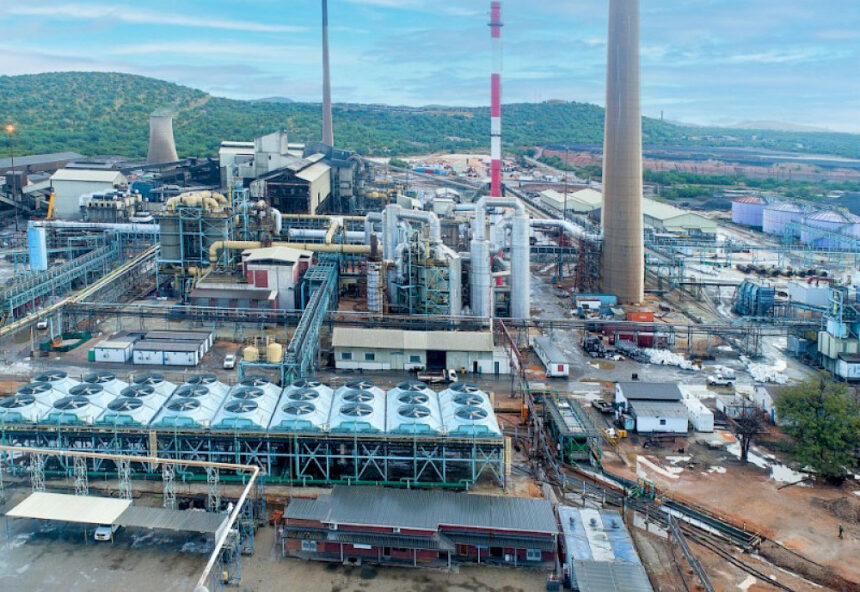The Namibian Competition Commission (NaCC) has approved the proposed merger between Hong Kong-based Sinomine Rare Metals Resources Co. Limited and Dundee Precious Metals (DPM) Tsumeb Holding (Pty) Limited, with conditions.
Sinomine Resource Group recently concluded deals to purchase controlling interests in a copper mine in Zambia, and earlier this year purchased Dundee’s copper smelter in Namibia.
This is as the Chinese mining group steps up efforts to increase the production of copper and other critical minerals in southern Africa.
The NaCC approved the merger on condition there shall be no retrenchment of Namibian employees three years after concluding the deal.
Also, the parties must maintain a ratio of no less than 92% local employees to foreign employees. Earlier this year, DPM sold its Tsumeb specialty smelter into a subsidiary of Sinomine Resource Group.
Dundee received about N$870 million (US$49 million) in cash for the issued and outstanding shares it holds in DPM Tsumeb.
Dundee acquired the smelter in 2010 to secure a processing plant for the complex concentrate from the company’s Chelopech mine in Bulgaria.
“We are pleased to announce the sale of the Tsumeb smelter, which is consistent with our strategic objective of focusing on our gold mining assets and simplifying our portfolio, going forward. We are extremely proud of the investments that we have made to transform Tsumeb’s operational and environmental performance into a specialised custom smelter with a highly-skilled workforce,” stated Dundee CEO David Rae via a media statement.
“We would like to thank the government of Namibia, the community of Tsumeb and our employees for their support over the past 13 years. We will work closely with Sinomine to ensure a smooth transition to support a successful future for the operation, and all of its stakeholders,” he added.
Dundee made significant upgrades at Tsumeb in the past years.
Sulphur dioxide emissions were reduced by 95% from 2014 to 2021.
There has also been a 72% decrease in average arsenic exposure since 2012 with the oversight of the arsenic advisory council.
The smelter produces 95% blister copper, which is then refined in Europe and Asia, as well as sulphuric acid, which is sold to third-party clients for use in uranium and copper mining.
Dundee has operations and projects located in Bulgaria, Serbia and Ecuador.
In December last year, Dundee acquired a 100% interest in the Osino Resources Twin Hills gold project close to Karibib.
A June 2023 feasibility study by Osino outlined an open-pit project with a 13-year mine life and average annual production of 175 000 ounces of gold over the first five years, with the first production targeted in the second half of 2026.
At the time, Dundee’s Rae said: “Twin Hills represents a unique opportunity to add a high-quality development asset in an excellent mining jurisdiction to our portfolio. The project provides a foundation for our future production profile, with production targeted for 2026, as well as significant exploration upside.
“This transaction also allows us to leverage our strong local relationships in Namibia, which we have built over many years, and continue our focus on growing our portfolio of gold assets. With Twin Hills and Čoka Rakita, DPM will have an extremely attractive growth pipeline and the financial capacity to fund it internally through our existing cash balance and free cash flow.
“The Osino team has done an excellent job in discovering and progressing Twin Hills to this point. We are excited to advance the project, and build on their efforts to unlock further value for all of our stakeholders.”
Heye Daun, president and CEO of Osino Resources, stated: “On behalf of Osino shareholders, I am very pleased to be delivering the Twin Hills gold project to DPM. DPM is a highly-credible and well-financed builder and operator of gold mines, with the technical skills and financial resources to progress the project through construction and into production.
“We are very proud to have attracted a company of DPM’s calibre, thereby securing the future development of Twin Hills, which we believe has the potential to become Namibia’s third and largest gold mine.”


